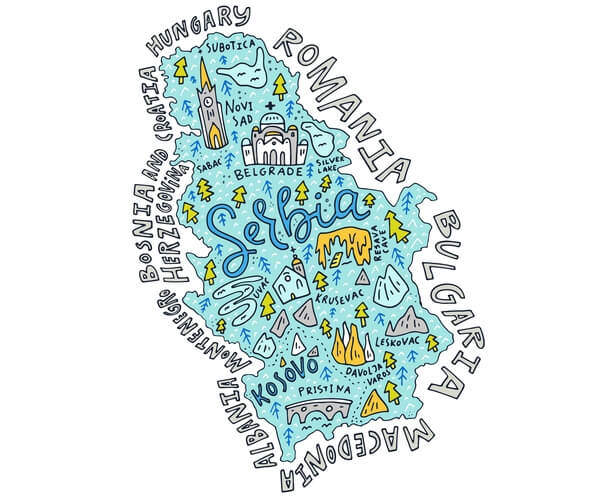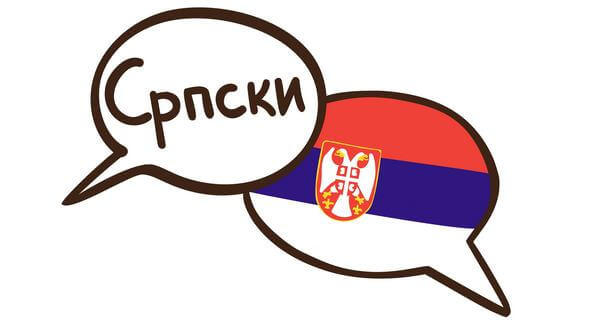Serbian Translation and Interpreting
At LEXIKA, we have been providing professional translation and interpretation services to satisfied clients since we started our business more than 25 years ago, in 1993. Since then, we have delivered tens of thousands of translation projects in various languages.
Our number one priority is to deliver high quality translation projects. Regional and global clients also appreciate the speed, credibility, and reasonable prices.
We provide professional translation and interpretation services Serbian translations of identity documentation and of official and other documents. We mostly translate from English and German but also from other world and European languages.

Why contact LEXIKA with a request for a translation of Serbian documents?
We always try to find the best solutions for specific situations and tailor the translation to suit our client’s needs. We only cooperate with professional translators and use the latest translation tools.
The quality of our translation and interpreting services is best illustrated by the numerous references from local and foreign corporations.
They appreciate our pursuit of the highest possible quality, professional approach and credibility, as we always respect the agreed deadlines. These are some of the reasons we have become the preferred provider of translation and interpreting services for many corporate clients.
Most often, we deal with Serbian legal translations, especially employment documents, extracts from the commercial register and other identity, court and official documents.
However, we also have plenty of experience with economic and financial translations and we provide the translation of technical documents and manuals too.
How do we do it?
Expert Serbian translators
Serbian translations are always prepared by native speakers who specialise in more than 120 fields of expertise. For every translation, we carefully select a linguist whose language skills and terminology best fit the client’s requirements.
Quality tested to meet international standards
Since 2009, our quality management system has been annually audited by TÜV SÜD – a renowned audit company – according to ISO 9001. They examine the systematic processing of all requirements and compliance with the set procedures. We recommend our clients have their texts translated in compliance with ISO 17100, which imposes high qualification requirements on translators and revisers.
Modern technologies
When translating Serbian, we use modern software tools which help us achieve higher quality and efficiency of translation. They allow our translators to work faster and help them ensure consistent terminology across the entire translation.
Thorough quality assurance
Even though modern procedures and tools are used in the process of quality assurance, we always make sure that each Serbian translation is checked by our expert reviewer’s eye. They verify the use of the terminology defined by the client and the correct use of translation procedures including all revisions and spelling corrections. They also check the graphical layout of the translation and the fulfilment of any specific requirements placed by the client.
Interested in using our services?
Leave us a message with your requirements and we’ll get back to you
Previously Serbo-Croatian, nowadays Serbian
Serbian is an Indo-European language and belongs to the South Slavic language family. The oldest literary texts in Serbian date back to the Middle Ages. The preserved texts include the Serbian Alexandride, an epic tale about the life of Alexander the Great, and a translation of Tristan and Iseult.

Serbian – the sister of Slovak and Croatian
Phonetically, the language closest to Serbian from all the Slavic languages is Slovak. If you ever go to Serbia or Montenegro, don’t worry if you can’t speak the language. In maritime regions, English or Russian will do.
In addition to Slovak, Serbian is also very close to Croatian. The main difference between these two languages is that Serbian took more loanwords from Russian while Croatian maintained more of a traditional Slavic form.
Serbian is the official language of Serbia and of the already mentioned Republic of Montenegro. It’s also the language of the Serbian people in Bosnia and Herzegovina and a minority language in Croatia, Macedonia, and in some other European countries (for example in Slovenia, Romania, Germany, Austria, Switzerland).
Serbian is spoken by approximately 9.5 million people. The predominant Serbian writing system is Cyrillic, but they also use the Latin script, especially when using the computer or the Internet. The Serbian alphabet contains 30 letters.

